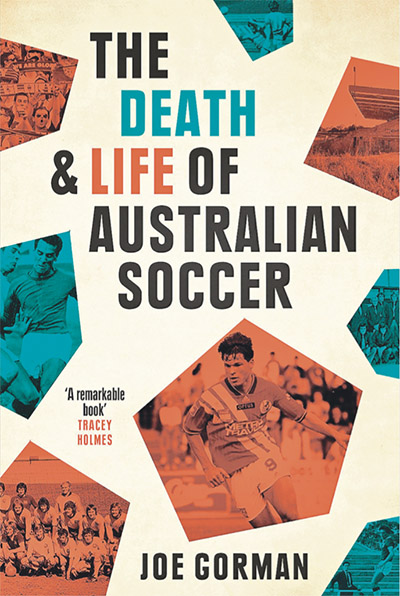
University of Queensland, £20.95
Reviewed by Mike Ticher
From WSC 386, May 2019
Buy the book
Like all the best football books, Joe Gorman’s forthright take on the history of the game in Australia is only partly about football. It’s also an occasionally perverse, at times infuriating, but extremely valuable argument about race and ethnicity in Australia, and what multiculturalism means. Gorman brings an original and apparently paradoxical perspective to his subject. Among the first generation of journalists to grow up in a wholly digital world, he has spent years leafing through dusty football newspapers and rediscovering their neglected creators. Too young to experience the old National Soccer League (NSL), which was put out of its misery in 2004 to make way for the A-League, he has written what could be mistaken for a tribute to the NSL. And he stubbornly rejects the move from “soccer” to “football” that has symbolised the official trajectory of the game in the past decade.
The core of the book is the story of the European migrants who sparked life into Australian soccer in the 1950s and 1960s. The model they created dominated until the 1990s, when official attempts to purge the game of its ethnic image, combined with the clubs’ failure to expand their audience, set in train their eventual eclipse. Gorman gives them long overdue credit for many achievements, including the establishment of the NSL in 1977 (the first truly national league of any sport in Australia) and the creation of a production line of talented players. He rightly damns the thinking that dominated the A-League’s early years, which wrote off the old “ethnic” clubs as a drag on the game’s future and brutally isolated them – incidentally sabotaging youth development, a blunder still evident in the national team’s struggles.
He certainly could not be accused of whitewashing the NSL, accusing it of “almost every possible social disgrace”, including fan violence and racism, and of ending up as “a garbage fire of personal, political, factional and sectarian jealousies”. Yet he also blames the willingness of Anglo Australians to see clubs run by migrants and their descendants as proof of “ethnic separatism”, rather than, as he does, “perhaps the most raw and authentic expression of Australia’s multicultural society”.
This is where many, me included, will part company with his analysis. The ethnic clubs played a vital role for their communities and for developing football, but it was inevitably one that would diminish with time and that would be hard to transform into a broader appeal. It can hardly be surprising that few Anglos (or other non-Anglos, for that matter) shared Gorman’s enthusiasm for the fiercely nationalistic Croatian clubs in particular – he praises the Croatian badge-kissing Mark Viduka as “all that was good and right about Australian soccer”.
There is a lot here to take issue with, in the detail and the broad picture. Still, this is a hugely important book, full of personalities and stories that would otherwise have remained lost thanks to the Australian game’s notoriously terrible (and sometimes deliberate) failure to record its own history. The challenging questions Gorman’s brilliant research has produced are matters that everyone who is interested in Australian football needs to think about.